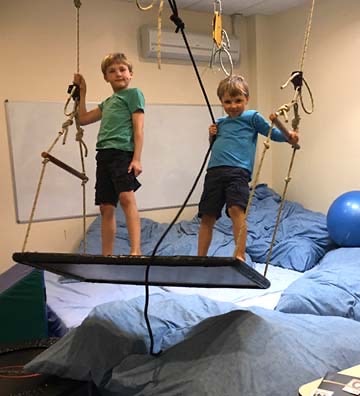Prospect physio helps individuals reach their maximum movement and function at any age or stage of life. It also improves the quality of life by addressing physical, psychological, and emotional well-being.
Physiotherapy can assist in managing various chronic conditions, often working alongside a multidisciplinary team. In addition, physiotherapists offer lifestyle modification and self-management advice, prescribe aids and appliances, and provide health promotion education.
Treatment
 Physiotherapists treat various physical issues, from pain and injuries to chronic health conditions. They employ manual therapies and exercises for improved movement, function, and mobility restoration. Furthermore, Physiotherapists educate their patients about the symptoms, causes, and treatments related to their condition.
Physiotherapists treat various physical issues, from pain and injuries to chronic health conditions. They employ manual therapies and exercises for improved movement, function, and mobility restoration. Furthermore, Physiotherapists educate their patients about the symptoms, causes, and treatments related to their condition.
Different physiotherapists specialise in different areas. Some specialise in orthopedic/musculoskeletal physiotherapy, women’s health physiotherapy or pediatric physiotherapy. Others work closely with athletes and sports teams, encouraging them to stay active and perform at peak performance levels.
Orthopedic/musculoskeletal physiotherapy aims to restore the function of your muscles, bones, joints and tendons by relieving pain, increasing mobility and correcting any skeletal injuries. In addition, it can alleviate discomfort caused by these injuries.
Neurological Prospect physio treats neurological diseases such as Alzheimer’s, cerebral palsy and Parkinson’s. It also improves limb responsiveness, balance and tone while managing strength levels.
A physiotherapist may use ultrasound, a form of sound that penetrates deep tissues to stimulate circulation, cell activity and regeneration. They may also use hydrotherapy in water to strengthen muscles while improving flexibility and coordination.
Prospect physio is a science-based profession that takes an integrated approach to heal, considering physical and social aspects of a person’s well-being. Physiotherapists collaborate closely with their patients to guarantee a positive experience and reach their objectives.
They work in various settings, such as hospitals, clinics, nursing homes and rehabilitation centres. Sometimes, they may also come to clients’ homes to provide extra care, such as elderly or disabled people who require extra attention.
Exercise is a significant element of physiotherapy treatment and helps promote movement and function, improve circulation, facilitate joint mobility and build muscle tone and strength. In addition, it plays an integral role in the recovery process after injury or surgery.
Education
Education and training options for physiotherapists vary. They may receive a bachelor’s degree, postgraduate qualifications and professional development. After graduation, graduates can choose to specialise in fields such as orthopedics, pediatrics or neurorehabilitation.
In becoming a physiotherapist, the initial step is to apply and complete an accredited physical therapy program. These degrees can usually be found at university campuses across America, but some online schools also provide these degrees.
Students participating in clinical rotations may be placed both inside and outside hospitals. They’ll manage patients with complex medical needs and collaborate with other healthcare professionals to provide treatment.
Students pursuing a physiotherapy education will learn about the practice’s moral foundations. It includes developing the capacity to meet patients’ needs, respecting their autonomy and beliefs, and having enough moral courage to make ethical decisions in their clinical setting.
A physiotherapy education founded in moral principles of practice and integrated into all teaching and learning will give students a better insight into the profession, allow them to impact society, and improve patient outcomes. Thus, physiotherapists have more power to address social determinants of health and decrease inequities within healthcare delivery.
Prevention
Physiotherapists can offer a range of prevention techniques to enhance their patients’ quality of life. It includes educating them about their health, reducing risk factors for illness and injury, and increasing overall fitness levels.
Many physiotherapists are trained in exercise and possess the expertise to design programs to boost their patients’ strength, balance, and mobility. Treatments may include walking/moving exercises, strengthening exercises and manual therapy.
In addition, physiotherapists can help identify any past injuries and suggest a plan to prevent them from reoccurring. It is done by considering their patient’s lifestyle, medical history and previous injuries to create an individualised plan that promotes health while decreasing the likelihood of future pain or injuries.
A physiotherapist can assess how well their patient’s muscular-skeletal systems are working together and detect any imbalances or problems that could be causing them to stumble. This assessment may involve physical examination, including joint proprioception tests, inner ear checks, post-surgery side effects, and more.
The physiotherapist will then work with the patient to improve balance, strengthen their core and increase flexibility so they don’t experience any more issues. Results can be seen after just a few sessions and may even reduce their risk of falling!
 Sports physio Adelaide can help athletes of all ages and abilities improve their health, fitness and performance. So whether you are an Olympic athlete, a recreational weekend warrior, or simply looking to get back into a sport after prolonged inactivity, our physios can help you achieve your goals.
Sports physio Adelaide can help athletes of all ages and abilities improve their health, fitness and performance. So whether you are an Olympic athlete, a recreational weekend warrior, or simply looking to get back into a sport after prolonged inactivity, our physios can help you achieve your goals. Paediatric occupational therapy is designed to help children experiencing delays or challenges. The main goal of occupational therapy is to help children reach their developmental milestones. Children who have difficulty calming themselves or paying attention may require occupational therapy. These children may also avoid activities that are happening around them. They may also have difficulty performing daily tasks like dressing and toileting independently.
Paediatric occupational therapy is designed to help children experiencing delays or challenges. The main goal of occupational therapy is to help children reach their developmental milestones. Children who have difficulty calming themselves or paying attention may require occupational therapy. These children may also avoid activities that are happening around them. They may also have difficulty performing daily tasks like dressing and toileting independently. One recent study evaluated the safety of
One recent study evaluated the safety of  After undergoing a tummy tuck Adelaide, patients should expect some discomfort and bruise in the abdominal area. The incision will be a few inches long and visible for several weeks. The scar will fade over time, but the appearance may be embarrassing for some people or make them look older. However, the bruises will go away over a short period.
After undergoing a tummy tuck Adelaide, patients should expect some discomfort and bruise in the abdominal area. The incision will be a few inches long and visible for several weeks. The scar will fade over time, but the appearance may be embarrassing for some people or make them look older. However, the bruises will go away over a short period.